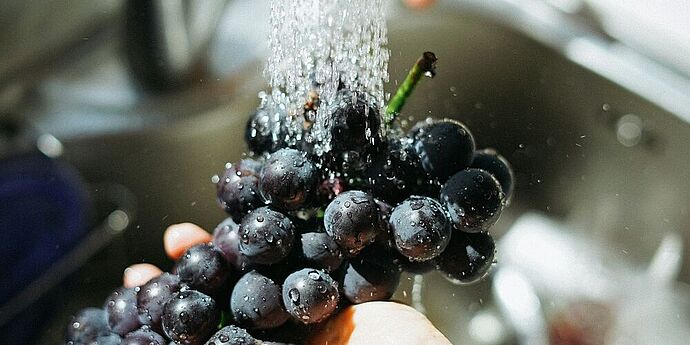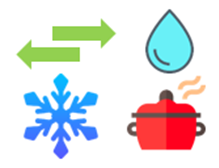Food safety

The students learn something about the importance of hygiene in food production.
| Fächer | CLIL, Mikrobiologie und Hygiene, Chemie Labor, Ernährung |
| Erstellt von | DIin Nina Maurer, HBLA Sitzenberg |
| Dauer | 2 UE |
| Schulstufe | ab 11. Schulstufe |
| Lernziele | Content-related learning outcome: Language-related learning outcome: |
Activity 1
Have a look at the word cloud. First make sure that you understand all the words. Look up any unknown words in an online dictionary. Then get in pairs and speculate what the lesson will be about.
Activity 2
Food hygiene for businesses
Good food hygiene is essential for you to make or sell food that is safe to eat. It is very important for you and your staff to understand what good food hygiene is.
Good food hygiene: the 4 Cs
Good food hygiene helps you to:
- Obey the law
- Reduce the risk of food poisoning among your customers
- Protect your business's reputation
Good food hygiene is all about controlling harmful bacteria, which can cause serious illness. BAC (foodborne bacteria) could make you and those you care about sick. In fact, even though you can’t see BAC - or smell him, or feel him - he and millions more like him may have already invaded the food you eat. But you have the power to Fight BAC! Foodborne illness can strike anyone. Some people are at a higher risk for developing foodborne illness, including pregnant women, young children, older adults and people with weakened immune systems. For these people the following four simple steps are critically important:

The four main things to remember for good hygiene are:
- Cross-contamination (Separate)
- Cleaning
- Chilling
- Cooking
These are known as the 4 Cs. They will help you prevent the most common food safety problems.
Form 4 groups. The first group reads part 1, the second group reads part 2, the third group reads part 3 and the fourth group reads part 4. While reading summarise the most important facts in a mind-map. Get back to the text and write down 3 to 4 WH-questions. Provide the correct answer to your questions.
Then get together with a person who has read the same part as you. Compare your findings and add any missing information.
Finally, get in groups of four and inform each other about the part of the text you have read. Write the questions on the board.
Activity 3
Watch the video and find the mistakes. What´s wrong and how does it work correct?
Make a list of a minimum of ten mistakes!